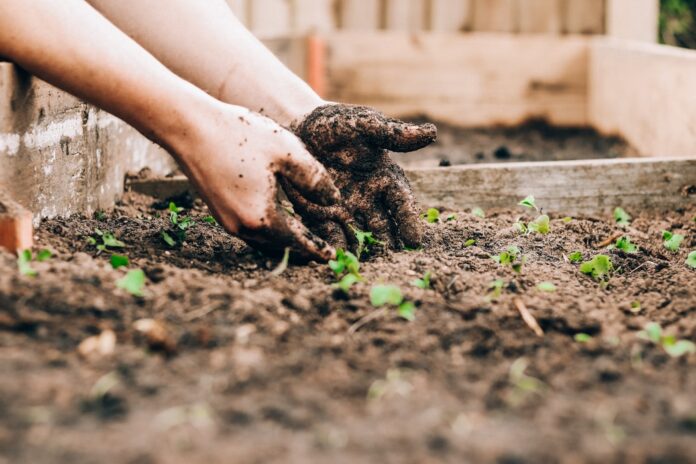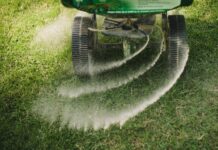
When it comes to weeds in our lawn or garden, no one welcomes them. We all want a beautiful landscape with minimum work. The answer seemed to be chemicals that we applied freely. They worked. But today there are grave concerns about the effects of these chemicals on humans and on the earth.
The main ingredient in Roundup is glyphosate which the World Health Organization (WHO) has named as a probable carcinogen. Non-Hodgkin Lymphoma seems to be found significantly more often in farm workers who have a higher exposure to this chemical. Studies are continuing to determine what risk glyphosate has on the environment and on humans who ingest it through food consumption or breathe it in the dust and air from farmland. In the meantime, glyphosate is still the main ingredient in most weed killers.
If you want to eliminate this chemical from your home environment or you are an organic gardener, there are other non-toxic alternatives including organic weed and grass killers which you can find on this site. Here are a few other natural alternatives listed below.

- Hand Pulling. This is a labor-intensive solution but an effective one. Pull weeds after a rain to have better success in removing the entire root. Any remaining root could regrow.If you keep up with weeding, the amount that re-emerge is minimal.
- Hoeing. Some gardeners prefer to hoe around their plants rather than pulling the weeds. The weed as well as all plants gets its energy from the leaves. When you hoe, the leaves are cut off. The roots are still in the ground ready to regrow however after a few times with the hoe, the plant will weaken and die.
- Barriers. The weed can’t grow without light and air. If the ground is covered, the weeds can’t grow, and are smothered. A great way to do this is by placing several layers of newspaper or cardboard on the soil. Wet the soil first, and then lay the newspaper or cardboard on top. Thoroughly wet the newspaper or cardboard. You can then cover the area with mulch. This works great on paths or larger open areas like under flowering shrubs or on garden paths. The newspaper and cardboard will eventually break down but in the meantime the weed below will die and any seeds that fall on the area won’t reach the soil.
Img source: unsplash.com - Barrier cloth. An easier method is to use a barrier cloth instead of newspaper or cardboard. Barrier cloth comes on rolls in different sizes. Simply roll out the cloth and cut it to the size and shape you need. The cloth is held in place with metal pins and then covered with mulch. The barrier cloth will allow water to penetrate the fabric but weeds cant grow through. If you want to add a plant or flowering shrubs to the area, simply cut a hole in the fabric to accommodate the size of the plant. Barrier cloth will break down but not for years longer than the newspaper or cardboard. You want to use barrier cloth in areas like a shrub garden or a hedge line.
- Longer Grass. If you are worried about weeds taking over the lawn, let it grow longer. This gives your grass a deeper root system. Feed your lawn to keep it well-nourished and healthy. This will make it difficult for the weed seeds to reach the soil level of your lawn. If an occasional weed does make an appearance, use a trowel to loosen the soil and remove the weed by hand.
- Boiling water. This is effective but does have a certain amount of potential danger. Boil water in a tea kettle or similar pot that will minimize the danger of spilling. Use hot pads to carry the boiling water outdoors and pour the water on the weeds. This works best when eliminating weeds from the cracks in the pavement or patio. It will not kill the root, so may need a repeat application to eliminate the weed.
Img source: unsplash.com - Lemon Juice. An organic weed or grass killer might be in your home right now. Lemon juice will kill weeds. If you don’t have any lemons, a bottle of Realemon will work just as effectively. It is the acid content that kills the weed but remember it will kill any plant it comes in contact with. Be careful that you don’t allow the spray to hit your flowers or vegetable seedlings.
- Torch the Weeds. There are propane torches made to kill weeds. They are held much like a weedwhacker but instead of cutting the weed, this tool will burn it. They are quite effective at killing the weeds and kind of fun at the same time.
- Edging. Use edging as a barrier to keep the grass from encroaching on the garden beds. Edging can be made of plastic, metal, or rubber. If you prefer, the edging can also be made of wood, or use stone pavers,
- Vinegar. Vinegar is also a good organic weed and grass killer. The regular household vinegar is about 5% acidic level but there is a much stronger level of acidity in gardener’s vinegar. Add about a tablespoon of dish soap to help the vinegar to adhere to the plant leaves. Try the household vinegar first, If you aren’t satisfied with the results, try the higher acidity gardener’s vinegar.

There are organic mixtures that include the use of salt. The problem with salt is that it does not break down. Any soil that has been exposed to salt will not grow any plants for years. If you do choose to use a mixture that includes salt, be very careful.
Remember that each weed is different. Some will be very easy to eliminate, while others refuse to die. Try the least aggressive method and work up. The goal is to use little or no chemicals whenever possible.


















